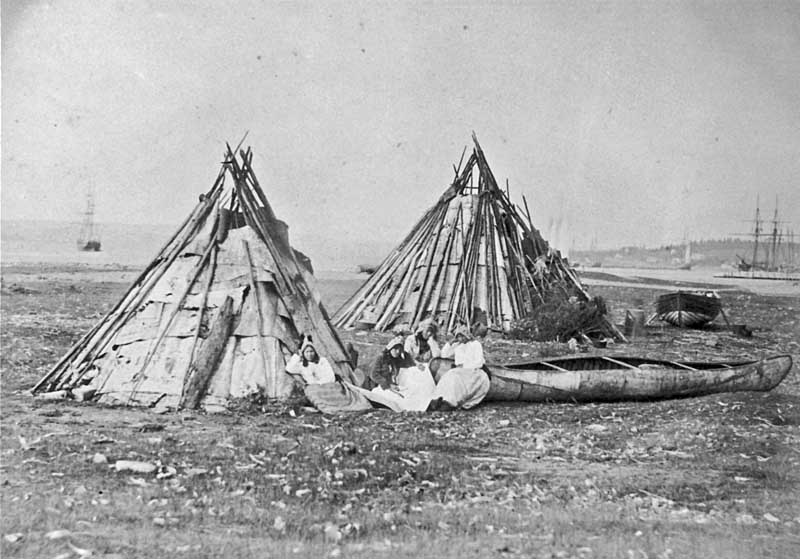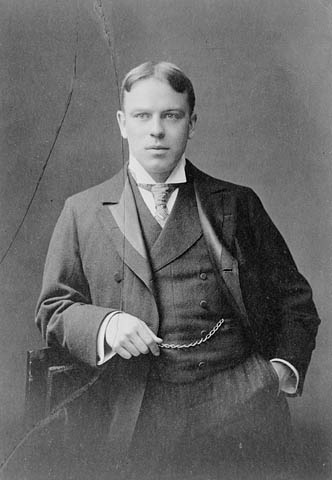|
Florence, Nova Scotia
Florence (2001 pop.: 1,684) is a community in the Cape Breton Regional Municipality, Nova Scotia, Canada. The community is located north of Highway 105 and west of Sydney Mines. History The community of Florence was named after Florence M. McDonald, wife of Daniel Duncan McKenzie, Member of Parliament for North Cape Breton and Victoria. He became interim Liberal leader upon the death of Sir Wilfrid Laurier in 1919, "ascending higher on the political pyramid than any other Cape Bretoner before or since." Subsequently, he was Solicitor General in Mackenzie King's first cabinet and in 1923 was appointed to the bench of the Supreme Court of Nova Scotia. In 1910 it was home to a large co-operative store located on Florence Corner. In 1950 Florence had its first little league Little League Baseball and Softball (officially, Little League Baseball Inc) is a 501(c)(3) nonprofit organization [...More Info...] [...Related Items...] OR: [Wikipedia] [Google] [Baidu] |
Nova Scotia
Nova Scotia ( ; ; ) is one of the thirteen provinces and territories of Canada. It is one of the three Maritime provinces and one of the four Atlantic provinces. Nova Scotia is Latin for "New Scotland". Most of the population are native English-speakers, and the province's population is 969,383 according to the 2021 Census. It is the most populous of Canada's Atlantic provinces. It is the country's second-most densely populated province and second-smallest province by area, both after Prince Edward Island. Its area of includes Cape Breton Island and 3,800 other coastal islands. The Nova Scotia peninsula is connected to the rest of North America by the Isthmus of Chignecto, on which the province's land border with New Brunswick is located. The province borders the Bay of Fundy and Gulf of Maine to the west and the Atlantic Ocean to the south and east, and is separated from Prince Edward Island and the island of Newfoundland by the Northumberland and Cabot straits, ... [...More Info...] [...Related Items...] OR: [Wikipedia] [Google] [Baidu] |
Cape Breton Regional Municipality
Cape Breton Regional Municipality (often referred to as simply "CBRM") is the Canadian province of Nova Scotia's second largest municipality and the economic heart of Cape Breton Island. As of 2016 the municipality has a population of 94,285. The municipality was created in 1995 through the amalgamation of eight municipalities located in Cape Breton County. The region is home to a significant concentration of government services, social enterprise and private sector companies, including the Canadian Coast Guard College, Cape Breton University, NSCC Marconi campus, and New Dawn Enterprises. The rural areas of the municipality continue to host resource industries such as agriculture, fishing, mining, and forestry. CBRM is host to many cultural landmarks and institutions such as the historic Savoy Theatre, the Celtic Colours International Festival, the Cape Breton Centre for Craft, the Highland Arts Theatre, and Holy Angels Arts & Cultural centre, currently undergoing a $12-mill ... [...More Info...] [...Related Items...] OR: [Wikipedia] [Google] [Baidu] |
Nova Scotia Highway 105
Highway 105 in Nova Scotia represents the Cape Breton Island leg of the Trans-Canada Highway. It runs from the Port Hastings Rotary just east of the Canso Causeway in Port Hastings to the Marine Atlantic ferry terminal in North Sydney, representing a distance of . In 2010, the provincial government named the entire highway Mabel and Alexander Graham Bell Way in honour of Mabel Gardiner Hubbard and her husband Alexander Graham Bell, who resided and are buried at Beinn Bhreagh near Baddeck. Route description The highway travels northeast from Port Hastings along the base of a group of mountains known as "The Big Ridge" to Whycocomagh. It then follows the north shore of Bras d'Or Lake, bypassing Baddeck on a short Super two controlled access segment. Still running in a general northeast direction, at St. Anns the highway begins ascending the west slope of Kelly's Mountain on the Cape Dauphin Peninsula. Highway 105 descends the east slope of Kelly's Mountain using a series of ... [...More Info...] [...Related Items...] OR: [Wikipedia] [Google] [Baidu] |
Sydney Mines
Sydney Mines (Scottish Gaelic: ''Mèinnean Shidni'') is a community and former town in Canada's Nova Scotia's Cape Breton Regional Municipality. Founded in 1784 and incorporated as a town in 1889, Sydney Mines has a rich history in coal production, although mining activity has now ceased. Prior to a permanent settlement being established, there was significant activity along the shore. Upon the success of coal mining operations, the Nova Scotia Steel and Coal Company constructed a steel plant in Sydney Mines in 1902. The plant, alongside the steel plant in Sydney owned by the Dominion Iron and Steel Company combined to produce more than 50% of Canada's steel during World War 1. The plant was later sold to the British Empire Steel Corporation and ceased operations years later. History During the American Revolution, the British used the coal mines of Sydney Mines to supply the British loyalists in Boston and Halifax. American and French ships made great efforts to interrupt thi ... [...More Info...] [...Related Items...] OR: [Wikipedia] [Google] [Baidu] |
Daniel Duncan McKenzie
Daniel Duncan McKenzie, (January 8, 1859 – June 8, 1927) was a Canadian lawyer, judge, and politician. Life and career Born in Lake Ainslie, Cape Breton, Nova Scotia, the son of Duncan and Jessie (McMillan) McKenzie, McKenzie was educated at the Public Schools and at the Sydney Academy. He became a barrister and attorney-at-law, practicing in North Sydney, Nova Scotia. He served was Commissioner of Schools for Cape Breton and was elected ten times to the Municipal Council of North Sydney, serving as Mayor for five years. He was elected to the Nova Scotia House of Assembly in 1900 as a Liberal, and again at the general elections of 1901. He was first elected to the House of Commons of Canada for the electoral district of North Cape Breton and Victoria in the 1904 federal election. A Liberal, he resigned in 1906 when he was appointed a Judge of District No. 7, County Court of Nova Scotia. He retired in 1908 and was re-elected in the 1908 federal election. He was re-el ... [...More Info...] [...Related Items...] OR: [Wikipedia] [Google] [Baidu] |
Cape Breton North And Victoria
Cape Breton North and Victoria (also known as North Cape Breton and Victoria and Cape Breton North—Victoria) was a federal electoral district in the province of Nova Scotia, Canada, that was represented in the House of Commons of Canada from 1904 to 1968. History This riding was created in 1903 as "North Cape Breton and Victoria"' riding from Cape Breton and Victoria ridings. It consisted initially of the county of Victoria, the northern part of the County of Cape Breton: the districts of Boisdale, Boularderie, East Bay (North), French Vale, George's River, Grand Narrows, and Little Bras d'Or, and the towns of North Sydney and Sydney Mines. In 1924, its name was changed to "Cape Breton North—Victoria", and then to "Cape Breton North and Victoria" in 1933. It was redefined to consist of the county of Victoria, and that part of the county of Cape Breton contained in the municipal districts of Balls Creek and Edwardsville (No. 2), Big Pond (No. 13), Boisdale (No. 9), Boularderi ... [...More Info...] [...Related Items...] OR: [Wikipedia] [Google] [Baidu] |
Wilfrid Laurier
Sir Henri Charles Wilfrid Laurier, ( ; ; November 20, 1841 – February 17, 1919) was a Canadian lawyer, statesman, and politician who served as the seventh prime minister of Canada from 1896 to 1911. The first French Canadian prime minister, his 15-year tenure remains the longest unbroken term of office among Canadian prime ministers and his nearly 45 years of service in the House of Commons is a record for the House. Laurier is best known for his compromises between English and French Canada. Laurier studied law at McGill University and practised as a lawyer before being elected to the Legislative Assembly of Quebec in 1871. He was then elected as a member of Parliament (MP) in the 1874 federal election. As an MP, Laurier gained a large personal following among French Canadians and the Québécois. He also came to be known as a great orator. After serving as minister of inland revenue under Prime Minister Alexander Mackenzie from 1877 to 1878, Laurier became lead ... [...More Info...] [...Related Items...] OR: [Wikipedia] [Google] [Baidu] |
Solicitor General Of Canada
The Solicitor General of Canada was a position in the Canadian ministry from 1892 to 2005. The position was based on the Solicitor General in the British system and was originally designated as an officer to assist the Minister of Justice. It was not initially a position in the Canadian Cabinet, although after 1917 its occupant was often sworn into the Queen's Privy Council for Canada and attended Cabinet meetings. In 1966, the modern position of Solicitor General was created with the repeal of the previous Solicitor General Act and the passage of a new statute creating the ministerial office of the Solicitor General of Canada. In recent decades the Solicitor General's department was responsible for administering the prison system, the Royal Canadian Mounted Police, the National Parole Board and other matters relating to internal security. In 2003, the position was styled Minister of Public Safety and Emergency Preparedness, and the portfolio expanded. In 2005, the position of So ... [...More Info...] [...Related Items...] OR: [Wikipedia] [Google] [Baidu] |
William Lyon Mackenzie King
William Lyon Mackenzie King (December 17, 1874 – July 22, 1950) was a Canadian statesman and politician who served as the tenth prime minister of Canada for three non-consecutive terms from 1921 to 1926, 1926 to 1930, and 1935 to 1948. A Liberal, he was the dominant politician in Canada from the early 1920s to the late 1940s. King is best known for his leadership of Canada throughout the Great Depression and the Second World War. He played a major role in laying the foundations of the Canadian welfare state and established Canada's international reputation as a middle power fully committed to world order. With a total of 21 years and 154 days in office, he remains the longest-serving prime minister in Canadian history. Born in Berlin, Ontario (now Kitchener), King studied law and political economy in the 1890s and became concerned with issues of social welfare. He later obtained a PhD – the only Canadian prime minister to have done so. In 1900, he became deputy ministe ... [...More Info...] [...Related Items...] OR: [Wikipedia] [Google] [Baidu] |
Little League
Little League Baseball and Softball (officially, Little League Baseball Inc) is a 501(c)(3) nonprofit organizationLittle League Baseball Inc, EIN: 23-1688231 . ''Tax Exempt Organization Search''. . Retrieved August 22, 2018. based in |
Communities In The Cape Breton Regional Municipality
A community is a social unit (a group of living things) with commonality such as place, norms, religion, values, customs, or identity. Communities may share a sense of place situated in a given geographical area (e.g. a country, village, town, or neighbourhood) or in virtual space through communication platforms. Durable good relations that extend beyond immediate genealogical ties also define a sense of community, important to their identity, practice, and roles in social institutions such as family, home, work, government, society, or humanity at large. Although communities are usually small relative to personal social ties, "community" may also refer to large group affiliations such as national communities, international communities, and virtual communities. The English-language word "community" derives from the Old French ''comuneté'' ( Modern French: ''communauté''), which comes from the Latin '' communitas'' "community", "public spirit" (from Latin ''communis'', " ... [...More Info...] [...Related Items...] OR: [Wikipedia] [Google] [Baidu] |
Mining Communities In Nova Scotia
Mining is the extraction of valuable minerals or other geological materials from the Earth, usually from an ore body, lode, vein, seam, reef, or placer deposit. The exploitation of these deposits for raw material is based on the economic viability of investing in the equipment, labor, and energy required to extract, refine and transport the materials found at the mine to manufacturers who can use the material. Ores recovered by mining include metals, coal, oil shale, gemstones, limestone, chalk, dimension stone, rock salt, potash, gravel, and clay. Mining is required to obtain most materials that cannot be grown through agricultural processes, or feasibly created artificially in a laboratory or factory. Mining in a wider sense includes extraction of any non-renewable resource such as petroleum, natural gas, or even water. Modern mining processes involve prospecting for ore bodies, analysis of the profit potential of a proposed mine, extraction of the desired materials, ... [...More Info...] [...Related Items...] OR: [Wikipedia] [Google] [Baidu] |







